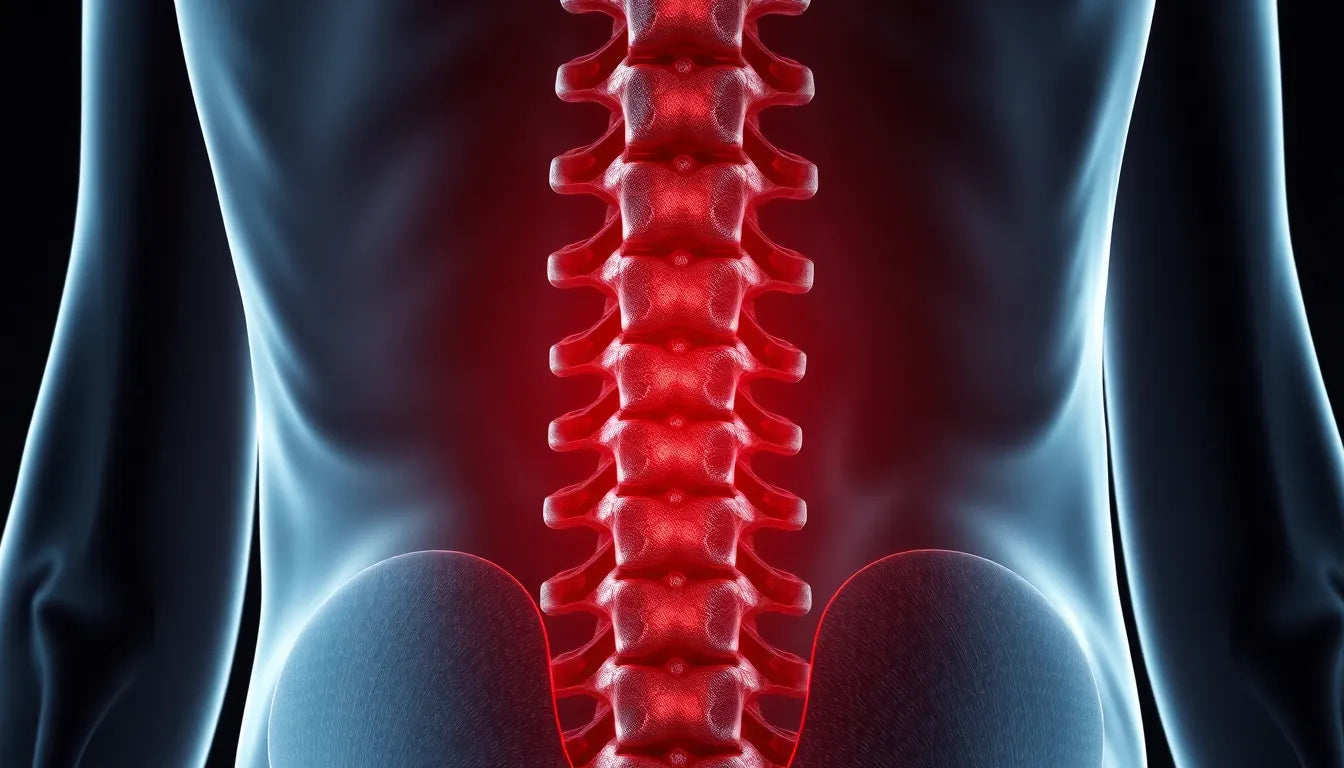Back pain is a common affliction that affects millions of people worldwide, influencing everything from work productivity to quality of life. Among the various causes of back pain, degenerative disc disease (DDD) and herniated discs are frequently discussed, but which one is more severe? This question often puzzles those suffering from back issues, as understanding the nature of their pain is crucial for effective management and treatment.
Understanding the spine's role
The spine is a complex structure that plays a vital role in our body's framework and mobility. It supports the body, protects the spinal cord, and allows flexibility and movement. However, this complexity also makes it susceptible to various issues, with spinal problems being a prevalent health concern. Recognizing the different conditions that can affect the spine, such as DDD and herniated discs, is essential for those looking to manage their back pain effectively.
Purpose of the post
This blog post delves into the intricacies of degenerative disc disease and herniated discs, exploring their differences, symptoms, and available treatments. The aim is to provide a clearer understanding of which condition might lead to more severe pain and have a greater impact on one's daily life. By examining these aspects, readers can gain insights into how these conditions affect the spine and, ultimately, their overall well-being.
Definitions and distinctions
To understand which condition might lead to more severe pain, it is crucial to differentiate between degenerative disc disease (DDD) and a herniated disc. DDD is a chronic condition characterized by the gradual loss of water and gel in the spinal discs. This process is part of the natural aging process, where the discs "dry out" over time, reducing their ability to cushion the vertebrae. As the discs lose their elasticity and hydration, they become less effective at absorbing shocks, potentially leading to chronic pain and discomfort.
On the other hand, a herniated disc is an acute condition often resulting from injury or strain. It occurs when the inner material of the disc, known as the nucleus pulposus, protrudes through a tear in the outer layer of the disc. This bulging can press on nearby nerves, leading to immediate and often severe symptoms. Unlike DDD, which develops gradually, a herniated disc can occur suddenly and may cause intense pain.
Pain patterns and symptoms
The pain patterns and symptoms associated with DDD and herniated discs differ significantly, which can influence the perceived severity of each condition. DDD typically causes chronic low back pain, which can sometimes extend into the legs in the form of sciatica. This pain is persistent and long-term, often described as a dull ache that gradually worsens over time.
In contrast, a herniated disc often results in acute back and leg pain that can radiate along the affected nerve. This pain is often described as sharp or burning and may be accompanied by tingling, muscle weakness, and impaired reflexes. The symptoms can vary depending on the location of the herniated disc; for instance, a cervical herniation might affect hand grip strength, while a lumbar herniation could impact leg function.
Visual analogy: the jelly donut
To better understand the physical differences between these conditions, consider the "jelly donut" analogy. Imagine a healthy disc as a fresh jelly donut. In the case of DDD, the donut gradually dries out, losing its filling and becoming less pliable. Conversely, a herniated disc is akin to the donut being squeezed until the jelly bursts out, causing immediate issues. This analogy helps illustrate why DDD often leads to a slow progression of symptoms, while a herniated disc can result in sudden and severe pain.
Ultimately, determining which condition is worse depends on individual circumstances. A herniated disc may cause more acute pain due to nerve compression, while DDD represents a progressive, long-term condition that can lead to chronic pain. Each condition requires a tailored approach to treatment and management, emphasizing the importance of a personalized medical assessment to address specific symptoms and improve quality of life.
Treatment approaches for disc conditions
When addressing degenerative disc disease (DDD) and herniated discs, treatment options vary based on the severity and specific symptoms of each condition. Non-surgical methods are often the first line of defense. These include anti-inflammatory medications to reduce swelling and pain, physical therapy to strengthen supporting muscles and improve flexibility, and oral steroids or epidural steroid injections to provide more direct relief.
In cases where non-surgical treatments do not provide sufficient relief, surgical options may be considered. For herniated discs, a microdiscectomy is a common procedure that involves removing the portion of the disc that is pressing on the nerve. For DDD, surgical interventions such as artificial disc replacement or spinal fusion might be recommended, especially if the condition significantly affects quality of life.
Comparative analysis: is one condition worse?
The debate over whether degenerative disc disease or a herniated disc is more severe is complex and largely depends on individual circumstances. Herniated discs are often associated with more acute pain due to nerve compression, which can lead to severe, immediate discomfort. On the other hand, DDD is a progressive condition that typically results in chronic pain over time, potentially leading to long-term discomfort.
Ultimately, each condition presents unique challenges. The acute nature of a herniated disc might prompt more immediate medical intervention, while the chronic progression of DDD requires ongoing management and lifestyle adjustments. Therefore, determining which condition is "worse" is subjective and should be assessed on a case-by-case basis.
Conclusion: the importance of personalized care
Understanding the differences between degenerative disc disease and herniated discs is crucial for effective treatment and management. Both conditions can significantly impact quality of life, but the approach to each should be tailored to the individual's specific needs and symptoms. Consulting with a healthcare professional for a personalized assessment is essential in determining the most appropriate treatment plan.
Frequently Asked Questions
What causes degenerative disc disease?
Degenerative disc disease is primarily caused by age-related wear and tear on the spine. However, genetics and lifestyle factors such as smoking, obesity, and lack of exercise can also contribute to the condition.
Can a herniated disc heal on its own?
Yes, many cases of herniated discs improve over time with non-surgical treatments. The body can often resorb the disc material, leading to a reduction in symptoms.
Which condition is more likely to require surgery?
Herniated discs are more commonly treated with surgery if symptoms are severe and persistent. However, surgery is typically considered a last resort after non-surgical options have been exhausted.
Are there preventive measures for these conditions?
Maintaining a healthy weight, engaging in regular exercise, and practicing proper lifting techniques can help reduce the risk of developing both degenerative disc disease and herniated discs.
How do lifestyle changes impact these conditions?
Positive lifestyle changes, such as improving posture, quitting smoking, and incorporating back-strengthening exercises, can alleviate symptoms and slow the progression of these conditions, particularly for degenerative disc disease.
Sources
- Javery Pain Institute. "Understanding Degenerative Disc Disease and Herniated Discs."
- Saratoga Spine. "Degenerative Disc Disease vs. Herniated Disc: Key Differences."
- Spine-Health.com. "Treatment Options for Disc Conditions."
- Midwest Pain Clinics. "Pain Patterns in Disc Conditions."
- Javery Pain Institute YouTube. "Visual Explanation of Disc Conditions."
- Spine MD. "Stages of Degenerative Disc Disease."
- Neurosurgery One. "Understanding Disc Conditions: A Simple Analogy."
- Miami Neuroscience Center. "Symptoms of Herniated Discs by Region."


















